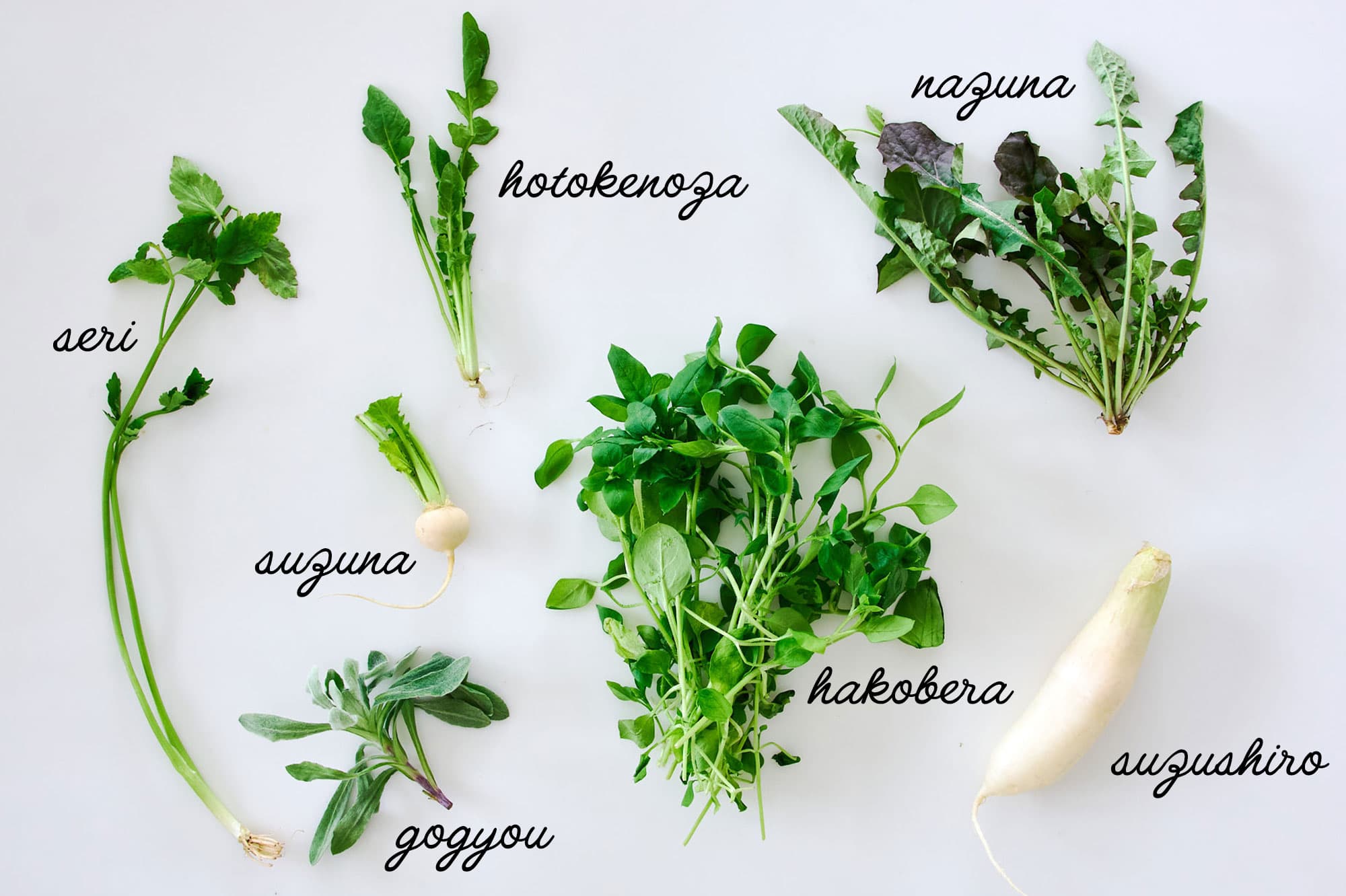
In Japan, January 7th is known as Nanakusa No Sekku (七草の節句), or the Festival of the Seven Weeds. Historically, the 7th marked the last day of Oshougatsu (Japanese New Year), and after a week of eating and drinking in excess, eating a porridge made with these seven leafy greens was considered a good way to hit reset.
Nanakusa Gayu (七草がゆ), which translates to "seven weeds rice porridge," is a type of okayu or rice porridge. Some people eat it out of tradition, some eat it to make amends for their New Year gluttony, while others eat it out of the belief that it will ensure health and wellness for the rest of the year, but I've yet to meet anyone that eats it because it tastes good.
Instead of the usual flavorless gruel, I decided to take this dish, which dates back 1000 years to the Heian Period, and do something new with it. The vision was to make a creamy, flavorful risotto contrasted by the vibrant herbal notes of the seven weeds. Instead of cooking the greens, I turned them into a vibrant salsa verde, which preserves their bright, verdant aroma, giving the porridge a boost of color and flavor.

Nanakusa (7 weeds)
- Seri (せり) Oenanthe javanica – Goes by the common name Japanese Parsley or Chinese Celery and is also known as Minari in Korean. You should be able to find Seri in Japanese or Korean grocery stores.
- Nazuna (なずな) – Goes by the common name Shepherd's-Purse. I've foraged for this on the West Coast, but you probably won't be able to find it in grocery stores.
- Gogyou (ごぎょう) Gnaphalium affine – Goes by the common name Jersey Cudweed.
- Hakobera (はこべら) Stellaria – Goes by the common names Chickweed and Stitchwort. I've foraged for this on both the West and East Coasts, and I believe it's pretty common all over the US.
- Hotokenoza (ほとけのざ) Lamium amplexicaule, which goes by the common name Henbit Deadnettle or Greater Henbit, was probably the original Hotokenoza, but somewhere in the past millennium, Lamium amplexicaule which goes by the common name of Nipplewort got substituted.
- Suzuna (すずな) Brassica rapa L. var. glabra – Suzuna is the old Japanese name for turnip.
- Suzushiro (すずしろ) Raphanus sativus var. longipinnatus – Suzushiro is the old Japanese name for daikon.
Because some of these greens will probably be pretty hard to come by outside of Japan, I recommend using a selection of peppery greens like arugula, mustard greens, parsley, kale, and watercress.
Access this Recipe
Welcome! I’m Marc Matsumoto, creator of No Recipes and host of television’s Bento Expo. You’ve stumbled upon my secret stash with over 150 original recipes with a new one coming every week! Unlike my other site, these recipes are member-supported, so you won’t find any banner ads here. Please consider becoming a member to access to this recipe, or you can check out some free recipes here.
- ✓ No ads
- ✓ Access the full stash of over 100 recipes
- ✓ 1 new recipe per week
- ✓ Support Norecipes.com
Already a member?





Comments
No Comments